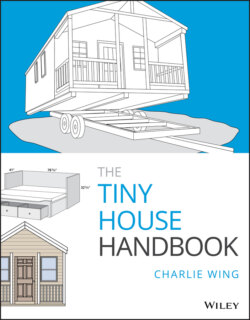Читать книгу The Tiny House Handbook - Charlie Wing - Страница 6
INTRODUCTION
ОглавлениеThe idea of living in a tiny house is not new. Outside of the developed world, most of the world’s people live in shelters no larger than those now defined in the US as “tiny” (less than 400 square feet). We have all read of and seen photographs of the Eskimo igloo, Native American teepee, Bedouin Arab tent, Gypsy vardo, Mongolian yurt, and Aboriginal dome. These are not temporary shelters, nor are they what Americans call “starter homes.” Rather, they are, and have been for millennia, the standard homes for their cultures.
For reasons this book does not address, the average new home in the US has grown to 2,400 square feet of living space, four bedrooms, three bathrooms, and a two-car garage. While many, and probably most, Americans aspire to ownership of these McMansions, an increasing number are questioning, “What if a person gets everything and it’s not enough?”
The tiny house movement is not just about tiny houses. It’s about lifestyle; it’s about less is more; it’s about a smaller footprint but a larger life.
There are already many books on the tiny house philosophy and lifestyle. Most contain photos of tiny homes on wheels parked in dramatic settings and a myriad of clever ideas for the utilization of small spaces. Few, however, offer much guidance on how to proceed from present situation (usually a house that no longer fits or no home at all) to a tiny home fulfilling one’s dream.
The Tiny House Handbook leads you through the full process from discovery (just what is a tiny home?) to the regulatory minefield of codes and zoning, to cost estimates, to design, to the actual construction (yes, you can build it yourself).
